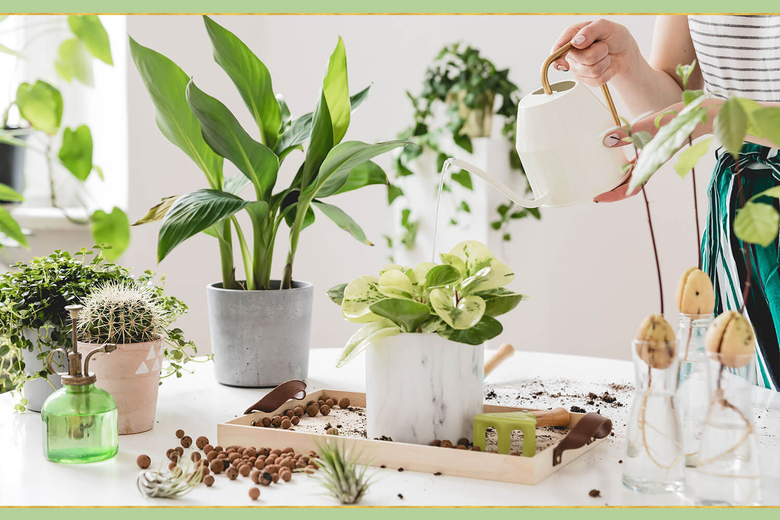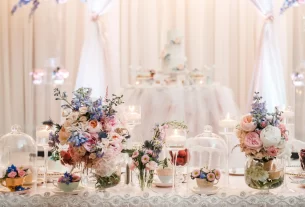Keeping potted plants alive is a learned art and skill. This means you can learn how to do it too even though you have no prior knowledge about it. Maybe you have purchased your favorite plant through a plant delivery Singapore service, but struggling to keep a single potted plant alive by yourself. Many people struggle to keep plants alive at first, but with patience, practice, and a little guidance, anyone can overcome that challenge.
You don’t need to be ashamed if you have a brown thumb. You should embrace your strong willingness to learn to grow a potted plant even though you are not a formally-trained student. Just because it’s not something that comes naturally to you or there’s no professional instructor that teaches you doesn’t mean you will never be able to do it.
To help you get started, we have put together in this article everything you need to know about taking care of potted plants. After you learn it here, you are ready to take on your plant-care journey to the next level. Remember, practice makes perfect.
Essential things for outdoor potted plants
Potted plants are key elements to create an appealing and inviting sanctuary on your outer part of the house, like patios, porches, gazebos, or gardens. Some of the concerns when learning how to take care of outdoor potted plants are the same as indoor plants. However, there are a few significant things to watch when caring for outdoor plants.
- Sun and shade
When it comes to outdoor plants, it is better to know whether your plants prefer full sun, full shade, or a combination of the two. After you figure out the best light exposure for your plants, you can match the plants with a place that suits these needs. Your plants will thrive once you get them in the right location.
For full sun, your plants need six or more hours of direct sun daily. Part sun, 3-6 hours of direct sun daily. Lastly, shade is fewer than 3 hours of direct sun daily. Some good potted flowers under the sun are angelonia, African daisy, and dahlia. Good potted flowers for shade are fuchsia, browallia, and torenia. Foliage and herbs that will thrive under the full sun are roses, basil, and thyme.
- Weather and temperature
Weather is one of the main concerns for outdoor plants. In a tropical country, things to watch out for are the rainy season and the heat when it is finally a dry season. All of them will affect your watering schedule. When your area has been receiving lots of rain, you won’t need to water your plants too often, at least until the soil dries out again. You might want to consider bringing your plants indoors if the rain is extremely heavy and risky for the plants. Another alternative way is to provide a shelter to protect the plants.
- Deadheading
This is a simple process of pinching off dead blossoms that are hanging loosely on their stems. Deadheading is not something that you completely have to do. These dead blossoms will eventually fall off alone. However, there are many advantages of doing the deadheading yourself.
First, your plant is more aesthetically pleasing without dead blossoms clinging to it. Second, deadheading initiates new growth because it helps push new blossoms out and makes your plant grow bigger and healthier.
- Avoid the pests
Placing plants outdoors means you are exposing them to various animals that might come to get a taste of your plants or just casually crossing them. The easy solution is to place your plants in a safer spot like a screened-in porch or a fenced-in garden. Another way, you can hang your plants in baskets since they are quite unreachable for some animals.
How to keep potted houseplants alive
For those who are unable to grow plants outdoors or prefer to add natural ornaments inside the house, growing indoor plants will be a great choice of hobby that gives pleasure. Indoor plants can also improve air quality and comfort for those surrounded by them. These are some tips to keep houseplants alive.
- Choose the right pot
When choosing a pot, the most important thing is to make sure there are holes in the bottom to allow water to flow out freely and gather in a tray underneath it. Without adequate drainage, all the excess water is trapped in the soil and can eventually damage your plant. Pots can be made of any materials like terracotta or ceramic, wood, plastic, metal, or fiberglass. The type of pot you choose usually depends on your style, budget, and plants’ size. If you intend to give the plant as a gift, pick a little more stylish pot to make it look prettier. Alternatively, you can simply purchase from gift Singapore.
- Use good soil
It is better to buy a potting soil bag that often contains extra nutrients or fertilizers to help your houseplant stay healthy and firm. You can find a potting mix designed specifically for one species, so you can adjust it to complement the plant you are working on.
- Ideal watering
Watering can be tricky sometimes, but you can learn the ideal way to do it. When your plant needs water, try to feel the soil, especially near the edge of the pot. If the dirt feels dry and brittle, it is time to water. If it still feels moist, just let it be for a while. After a few weeks of this practice, you should begin to get the hang of knowing the ideal time to water your plants.
When you water the plants, wait until the water begins to run out the hole in the bottom of the pot or until the soil no longer absorbs any water. If the water starts to pool on top of the soil, then stop the process.
- Give adequate light
Even when you grow a plant indoors, it still needs light to thrive. Window Sills are the right places to put plants. For other options, put them on a table in front of a window or any place exposed to enough sunlight.





